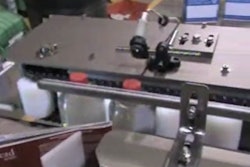It’s a grand vision: everything in the world talking to every other thing in the world through the magic of RFID technology. A frozen meal communicating with the refrigerator, microwave, and automated shopping list; clothes giving instructions to a washing machine and dryer; a medicine cabinet reading medication instructions and automatically dispensing them...the list goes on.
These grand visions help generate awareness of how RFID can provide everyday benefits to the average citizen. Unfortunately, they’re grand and complicated and require systems that are not yet in place or even feasible at the moment. And they distract people from thinking about the benefits of RFID in smaller, more easily implemented, and cost-justified applications.
There are already enough case histories and studies that clearly demonstrate the benefits of a well thought-out and properly implemented RFID system for inventory management, production control, asset tracking and location, patient monitoring, and so on. What most of these applications have in common is that they are not “grand”—they are focused on specific business cases and do not rely on a complex infrastructure.
While some important applications such as pharmaceutical pedigree and food chain security will require a comprehensive architecture to be viable, it’s possible to gain real benefits without significant additional complexity.
Consider how long it took to establish today’s electronic data interchange (EDI) standards and to get companies to consistently and accurately produce 856 Advance Shipment Notifications (ASNs). Today, most of these systems leverage the bar codes on shipping labels. But long before companies managed to get their EDI programs in order, the bar codes were providing benefits for inventory, billing, production, and QA/QC—all “closed loop” systems that addressed specific business cases within the company. Admittedly, the use of bar codes was initially imposed on many companies. But the smart ones learned how to turn what might have been just an additional business cost into a benefit.
Today’s situation with RFID is not entirely analogous to bar code implementation, but the lesson remains the same: Systems that are under the control of a single entity work. There is an increased ability to properly design, install, and utilize closed-loop systems that clearly deliver usable information for decision-making and rapid ROI. Designed properly from the start, they can then be integrated to a larger network of systems to improve overall efficiencies.
But in designing these solutions, don’t forget: It’s good to have the “grand vision” to know where you’re ultimately headed, but it shouldn’t get in the way of RFID deployments that are less than grand.
Bert Moore is director, communications and media relations, at AIM.Copyright© AIM, Inc.; www.aimglobal.org; www.rfid.org
























